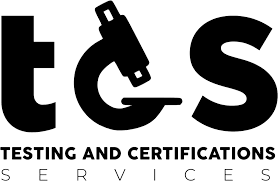What is a cleanroom? How can you get cleanroom certification? Contact your Account Owner to let them know it's time to upgrade.
Cleanroom is indeed an area usually used for the processing or manufacture of products requiring a minimum degree of environmental contaminants. This controlled atmosphere areas (CEAs) are spaces in which the accumulation of further airborne particles is already controlled. Cleanrooms are often designed and otherwise used in a way that minimizes the entry, production and perhaps retention of particles within the space and in which other related parameters are regulated.
Usually used in the manufacturing or science testing, a Cleanroom is a regulated space containing low amounts of contaminants such as pollen, airborne bacteria, aerosol particles and otherwise chemical vapors. Cleanroom Hepa Filter is also very good.
Built to restrict airborne fine particulates and some other environmental conditions, cleanrooms are accredited to a particular class based entirely on ISO 14644-1 or equivalent requirements. In order to ensure conformity, the room must conform with or surpass ISO specifications in line with the requirements. Cleanroom inspection and certification includes ensuring that the cleanroom works according to the particular criteria and otherwise ISO classification.
Usually, the room is indeed initially approved after the building is finished to ensure that it has been designed to the customer's specifications. The particular room is often regularly retested (annually or otherwise semi-annually) to somehow ensure that the standard has not improved during service. The cleanroom ethical standards previously tested are indeed ISO14644-1, ISO 144644-2 and otherwise ISO 14644-3. Cleanroom Certification is easily done.
Fume Hood Certification process should also include the occupancy condition the room has been tested: as-built, which somehow is the original, empty new facility, at-rest: which actually is the room available with all manufacturing equipment working but no employees present or otherwise working, which is therefore the room in fuller service. It is also standard practice to test and perhaps certify that a cleanroom or a pollution event has been renovated. Choosing the tests to conduct are dependent on a variety of factors, primarily standard criteria, auditing independent agency or client specifications, or client expectations. Clean Room Certifications are indeed reliable.
Any and otherwise all acceptance conditions should be explicitly specified for the Cleanroom Testing and Certification business. For e.g., the room must comply with ISO Class 7 operating mode at 0.5 and 5.0 microns. The amount of pressure must be cascaded from the main economic cleanroom, further to the dressing room, once again to the ambient. Or otherwise, the airborne pressure level sound cannot greatly exceed 72 dB "An" either for the comfort of the staff.
|
news 3
There is no vote on your system , please add new vote on your panel 24H
Html Code You can edit your blog and add widgets,html code ... |
